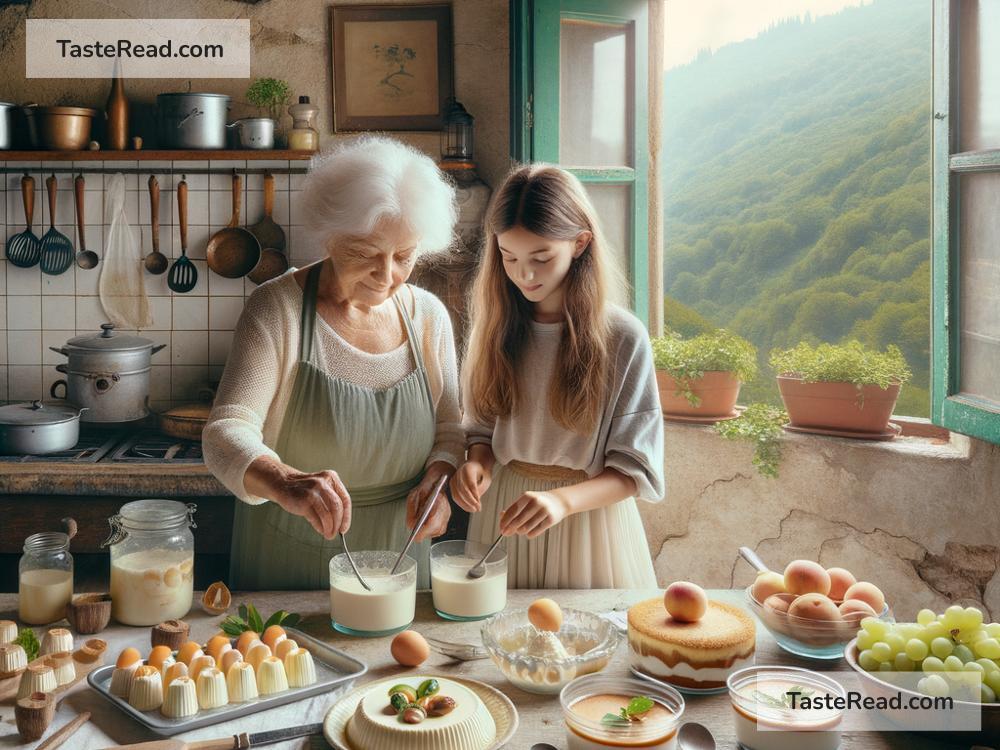Discovering Generational Panna Cotta Secrets in Verona, Italy
One of the joys of traveling is trying foods that tell a story. In Verona, Italy—a city full of history, romance, and charm—one dessert stands out: panna cotta. This creamy treat has been part of Italian food traditions for centuries. In Verona, many families take great pride in their panna cotta recipes, passing them down from generation to generation. During a recent trip there, I got a chance to uncover some of the secrets behind this beloved dessert.
What Is Panna Cotta?
Panna cotta, which means “cooked cream” in Italian, is a simple dessert made from cream, sugar, and gelatin. It’s known for its silky, custard-like texture that melts in your mouth. While panna cotta may seem fancy, it has humble origins. Traditionally, it was made to use up leftover dairy in rural kitchens. Over time, however, it became a symbol of elegance, appearing on restaurant menus and at family celebrations across Italy.
Despite its simple ingredients, panna cotta varies greatly depending on who makes it. Each region in Italy has its own twist on panna cotta, and families often guard their recipes like precious jewels. So, of course, I wanted to discover the Verona version.
A City Rich in Culinary Culture
Verona is famous for being the setting of Shakespeare’s Romeo and Juliet, but there’s much more to experience here. Its ancient streets, medieval architecture, and local wines create an unforgettable atmosphere. Food plays a big role in Verona’s culture, and desserts hold a special place in the hearts of locals.
When I decided to explore panna cotta traditions in Verona, I made a plan to talk to locals and visit family-owned restaurants. I found people who were incredibly proud of their food heritage, and their stories about panna cotta were just as rich as the dessert itself.
The Family Recipes
In Verona, panna cotta is not just a dessert; it’s a family heirloom. Many families here have their own special way of making it, and each recipe reflects the region’s history and flavors. I met a grandmother named Rosa, who has been perfecting her panna cotta recipe for over 50 years.
Rosa explained that the key to her panna cotta is freshness. “Everything starts with the cream,” she told me. “It must be the best quality. You can taste the difference.” Her cream comes from a small dairy farm just outside Verona, where cows graze on lush Italian pastures.
But Rosa’s recipe doesn’t stop there. She adds a secret ingredient: a tiny splash of her homemade hazelnut liqueur. “It brings warmth to the panna cotta,” Rosa said with a wink. She learned this trick from her mother, who learned it from her grandmother. “It’s how we keep the tradition alive,” Rosa proudly told me.
Unique Local Flavors
Another panna cotta enthusiast I met was Marco, a young chef at a small trattoria. Marco’s twist on panna cotta uses Verona’s seasonal fruits. In the summer, he tops it with fresh berries from the nearby hills. In the fall, he incorporates figs and chestnuts.
One unique flavor I wasn’t expecting was Amarone wine. Marco explained that Amarone, a bold red wine produced in Verona, can be reduced into a syrup and drizzled over panna cotta. The result is a flavor combination that is rich, slightly tangy, and completely unforgettable. This creative addition shows how Verona’s local products influence even its desserts.
The Art of Balance
Both Rosa and Marco emphasized the importance of balance in panna cotta. If the texture is too firm or too soft, the dessert loses its magic. Achieving the perfect balance of creamy and delicate takes practice. Rosa told me that her first attempts at panna cotta didn’t always go as planned. “It’s something you learn with love and patience,” she said.
Marco agreed. He said, “For many chefs, panna cotta seems simple, but it actually teaches you precision.” The recipes passed down in Verona ensure this balance, as each detail—from cooking temperatures to resting times—has been perfected over decades.
Bringing Verona to Your Kitchen
After learning about these generational secrets, I wanted to try making panna cotta myself back home. The most important lesson I learned was that panna cotta is more than just a recipe; it’s a piece of culture. Taking the time to find high-quality ingredients and adding a personal touch, like Rosa’s hazelnut liqueur or Marco’s Amarone syrup, can make all the difference.
While I’ll never rival the generations of expertise in Verona, making my own version gave me a deeper appreciation for the families who make this dessert their legacy.
Conclusion
Exploring Verona’s panna cotta secrets showed me how food connects people to their roots. Each recipe tells a story of family, community, and creativity, passed down with love and care. Whether it’s Rosa’s traditional approach or Marco’s modern take, Verona’s panna cotta is a true treasure worth discovering.
If you ever visit Verona, make sure to try this delightful dessert and, if you’re lucky, listen to the stories of the people who create it. Their passion for food and tradition will make your experience even sweeter. For now, I’m off to my kitchen to try one more panna cotta recipe and relive the flavors of Verona!


